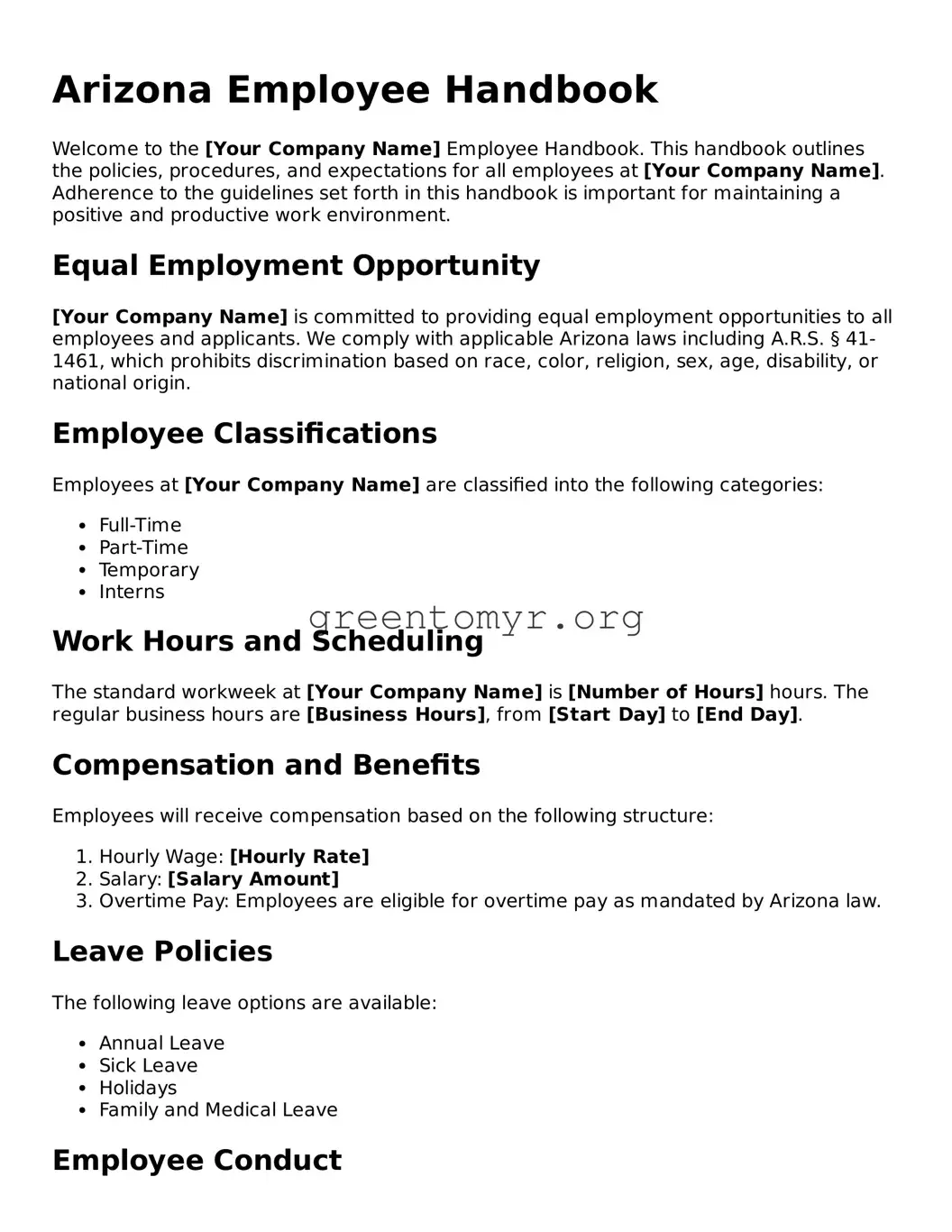Arizona Employee Handbook
Welcome to the [Your Company Name] Employee Handbook. This handbook outlines the policies, procedures, and expectations for all employees at [Your Company Name]. Adherence to the guidelines set forth in this handbook is important for maintaining a positive and productive work environment.
Equal Employment Opportunity
[Your Company Name] is committed to providing equal employment opportunities to all employees and applicants. We comply with applicable Arizona laws including A.R.S. § 41-1461, which prohibits discrimination based on race, color, religion, sex, age, disability, or national origin.
Employee Classifications
Employees at [Your Company Name] are classified into the following categories:
- Full-Time
- Part-Time
- Temporary
- Interns
Work Hours and Scheduling
The standard workweek at [Your Company Name] is [Number of Hours] hours. The regular business hours are [Business Hours], from [Start Day] to [End Day].
Compensation and Benefits
Employees will receive compensation based on the following structure:
- Hourly Wage: [Hourly Rate]
- Salary: [Salary Amount]
- Overtime Pay: Employees are eligible for overtime pay as mandated by Arizona law.
Leave Policies
The following leave options are available:
- Annual Leave
- Sick Leave
- Holidays
- Family and Medical Leave
Employee Conduct
All employees are expected to behave professionally. Misconduct may result in disciplinary action, up to and including termination of employment.
Health and Safety
Safety in the workplace is a priority at [Your Company Name]. Employees are required to follow all safety protocols and report any unsafe conditions or practices.
Acknowledgment of Receipt
By signing below, you acknowledge that you have received and read the [Your Company Name] Employee Handbook.
Employee Name: ___________________ Date: ________________
Signature: _________________________
